Augusta
Cushnoc, the furthest point of navigation up the Kennebec River, was the location of an Indian village when in 1628 the Plymouth Colony set up a trading post which operated until 1661. Abenaki Indians living further up the river were hostile to British settlements, so in 1754 Fort Western was built at Cushnoc. The fort, commanded by Captain James Howard, made the area safe for settlement and Hallowell was established in 1762 just down river from Cushnoc. By the 1767 Fort Western had done its job and ceased to be used as a garrison. In 1771 Hallowell it became an incorporated town with Cushnoc within its boundaries. The community that had grown up around the fort had developed its own identity so in 1797 it was separated from Hallowell. It was briefly known as Harrington, but a few months later it was renamed Augusta after the daughter of Revolutionary War soldier and statesman Henry Dearborn. Maine became a state in 1820 with its temporary capital in Portland until in 1827 Augusta was named capital of the state. The legislature continued to meet in Portland until the new State House was completed in Augusta in 1832. Augusta now has a population of around 20,000 making it the third smallest state capital in the USA. The state government complex has now spread across both sides of the Kennebec River and Augusta looks and feels like a city whose main industry is government.
Blaine House
This house was built in 1833 and was built by retired ship's captain James Hall. In 1862 the house was bought by James G. Blaine as a present for his wife Harriet. At that time Blaine was Speaker of the Maine House of Representatives, but he went on to be Speaker of the House in the US Congress, a US Senator and twice Secretary of State. In 1884 ran for President but defeat in New York by less than 2,000 votes handed the Presidency to Grover Cleveland. The house was donated to the State of Maine for use as a Governor's residence by Blaine’s youngest daughter Harriet Blaine Beale in 1919. She made the donation in memory her son, Walker Blaine Beale, killed in action in World War I, The house was It was remodelled to designs by Maine architect John Calvin Stevens and in 1921 Carl E. Miliken was the first governor to occupy the residence. Tours of Blaine House run on Wednesdays and Fridays, but must be booked at least 3 days in advance.
Old Fort Western
Fort Western features prominently in our introduction to Augusta at the top of the page. More than 250 years after it was built it is still standing, now known as Old Fort Western. You may be wondering why a fort in the easternmost colony was named Fort Western. It has nothing to do with geography, the fort was named after Thomas Western of Sussex (England) who was a friend of then Governor William Shirley. The fort never came under attack and the main tasks of the garrison were to resupply Fort Halifax further up the river and keep the boats used to transport supplies in good repair. When the fort was abandoned in 1767, the garrison commander Captain Howard bought the fort and the surrounding land. It became a trading post and private home. After the Howard family sold the fort it became a tenement house but in 1918 it was purchased by descendants of the Howard family with the objective of restoring it, They built two new blockhouses and a stockade. The stockade was again rebuilt in 1960. Although most of the timber has been replaced at some time, it is regarded as the oldest log fort in the United States and because it has changed little over years of continuous use it is one of the most authentic. Old Fort Western is open to the public in season as a living history museum. Click Tab 2 to see a Supply Boat & Blockhouse at Old Fort Western or Tab 3 to see the Dining Room.
Old Post Office & riverfront from Old Fort Western
From Old Fort Western you get a great view of the Augusta waterfront on the other side of the Kennebec River. One building over there really catches your attention, the grey granite building with a central tower. This is the The Old Post Office building. In the later stages of the 19th century Augusta grew into a major publishing town with William Gannett's ‘Comfort’ magazine serving its million subscribers from the city. A booming city needed a grand Post Office building and Mifflin E. Bell, Supervising Architect of the US Treasury Department, reponded with this Romanesque Revival style building. It opened in 1890 after four years of construction. It remained a post office until 1960 when a new and larger federal building was built. The Old Post Office was sold to a private owner who converted it for use as office and retail space while preserving its exterior.
State House
Competition to become the capital of Maine was fierce with Augusta, Belfast, Brunswick, Hallowell, Portland, Waterville and Wiscasset all throwing their hats in the ring. Augusta won because it was considered to be the most central location, which may seem odd when you look at the map. However, much of northern Maine is relatively undeveloped, so in terms of population distribution Augusta is reasonably central. The State House as designed by the renowned Boston architect Charles Bulfinch who gained fame designing Federal-style government buildings often with a central rotunda. He designed the Massachusetts State House and the rotunda of the US Capitol. Construction began on July 4, 1829 and the legislature met for the first time in the new State House on January 4, 1832. State House was extended three times in the 19th century, then between 1909 and 1910 it was almost completely rebuilt, doubling the length of the building and adding a much higher dome. By 2014 the copper sheath on the dome had reached the end of its life and the green covering in the picture has now been replaced by a new brown coloured copper sheath. The Maine State House has hourly public tours every morning Monday to Friday
DLU180329
Maine State Library, Museum & Archives from State House Common
As Monty Python might put it ‘and now for something completely different modern’. Dedicated in 1971, this building is easily the youngest on this page. Maine State Library has a substantial collection of genealogy information plus histories and published records for towns in Maine. It also has information covering other parts of New England and the Maritime Provinces of Canada. The Maine State Museum houses exhibits covering the history and natural science of the State.
Click on Minimap to navigate
Home > US States > New England > Maine >
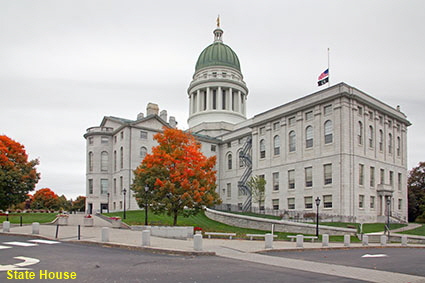


To move forwards or backwards through the Maine trail click the arrows above, or select your next destination on the Minimap.
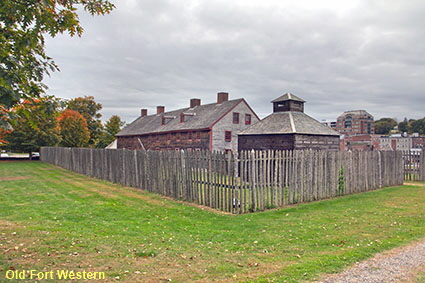
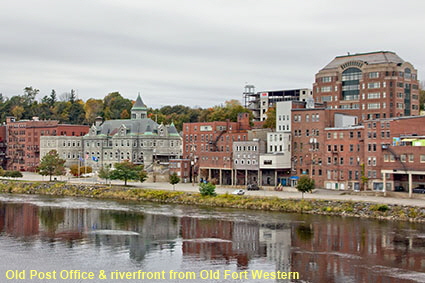
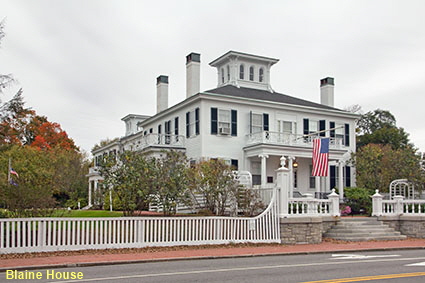
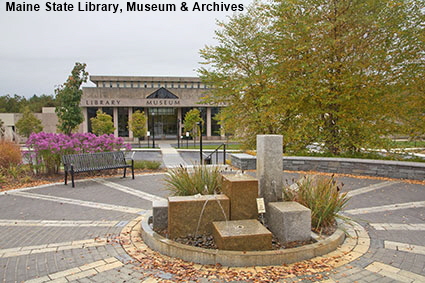
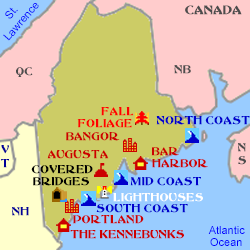

© Mike Elsden 1981 - 2025
The contents of this page may not be reproduced in full or in part without permission